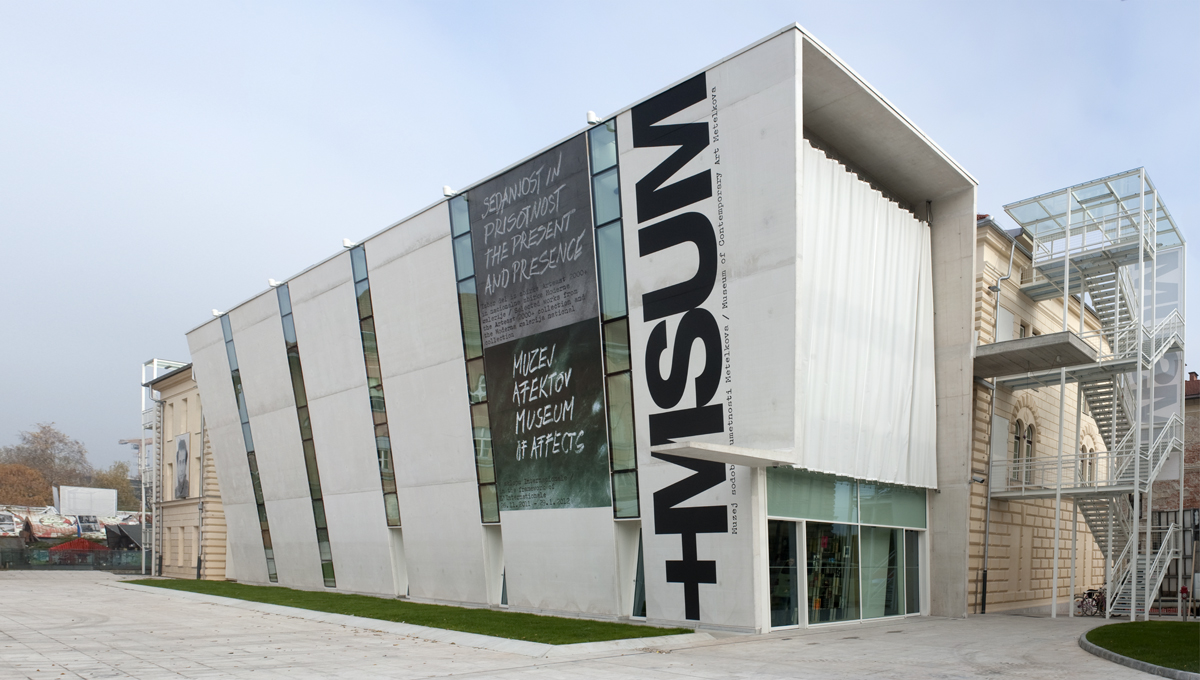Would you like a bank card like no other? Our service gives you the opportunity to express your creativity and impress everyone when paying. With words such as these banks and various financial institutions try to entice their customers with the option of communicating with a particular image that expresses their individuality – also when paying. An application that allows one to design one’s debit or credit card becomes a personal, friendly extension that pacifies the consumer at the critical moment of cash outlay, with the immeasurable value of the image of their nearest and dearest ones or, for instance, a sunset.
The three conceptual artists who have taken the name of Janez Janša have used this application as a medium, a readymade, to make a statement, at the same time transforming valid bank cards into miniature images of some of their past projects, and their wallets into portable collections transcending the museum. This becomes particularly apparent when bank cards are distinguished, in terms of the roles they play, as both concepts and as functional systemic elements of monetary institutions. A clear mark of this duality is the expiration date on the front of the card. When a card expires, it leaves the circuit of the system’s reality. The finality of the product reduces its functional value to simply that of an art object. Or rather, only then does it belong to an art institution also “physically”. It almost seems like a gentle tug of war between state and art forms. The dialogue is particularly manifest in the project involving the valid Slovenian identity cards of the three Janša artists, which Moderna galerija wishes to acquire for its collection, a project that has actually proved impossible: as long as the identity cards are valid, they cannot become part of an art collection. This only becomes possible with their non-functionality, i.e., their symbolic end, which also constitutes a loss, since henceforth they only function as representations.
Similarly, the status of the signature on the back of the credit card changes according to the dual vantage point as either a valid bank card or an artistic concept. Here its signifier changes: it is a signature identifying a bank customer, or an authenticating signature of the artist-author of the project. This power relation is further questioned in the artistic action the three Janšas carry out with the gesture of the triple artistic signature in the space meant for the (single) authorizing signature of the card holder. They then proceed to an ATM together and, still together, withdraw cash. The amount withdrawn can be interpreted as the value of the artwork or simply as some spending money.
Exhibited at the 1:1 STOPOVER are nine valid and signed credit/debit cards displayed in three triptychs. Depicted on them are images of the projects Mount Triglav on Mount Triglav, Study for the Monument to National Contemporary Art (Golden Triglav), and Signature, which takes the identity relations theme further with the triple signature. This, however, does not conclude the production of bank cards for the Janšas; the project is open and growing. New cards keep getting their DIY images combining art and life, or rather, intervening in the field of an institutionalized social situation.
Ana Mizerit
Janez Janša’s art represents a convergence of traditional visual media, conceptual practices, and new media. He represented Slovenia at the 50th Venice Biennale in 2003. He has also exhibited his work in New York, Sao Paulo, London, Berlin, Rome, Madrid, Prague, Budapest, Ljubljana, Belgrade, Tirana, and elsewhere.
Janez Janša is the author, performer, and director of interdisciplinary stage productions including Miss Mobile, We are all Marlene Dietrich FOR, and Pupilija, papa Pupilo and the Pupilceks. He regularly participates with his work in contemporary arts festivals in Europe and the United States and is the director of Maska, a Ljubljana-based non-profit organization for publishing, production, education and research.
Janez Janša is a new-media artist who has gained acclaim both at home and internationally. He has shown his projects at Manifesta 4, Ars Electronica, ZKM Karlsruhe, ISEA, ARCO, Kiasma, MNAC/ National Museum of Contemporary Art in Barcelona, MMOMA/Moscow Museum of Modern Art, MMSU/Museum of Modern and Contemporary Art in Rijeka, and +MSUM, among others. He won the ARCO/Beep 2007 Award for Digital Art.


